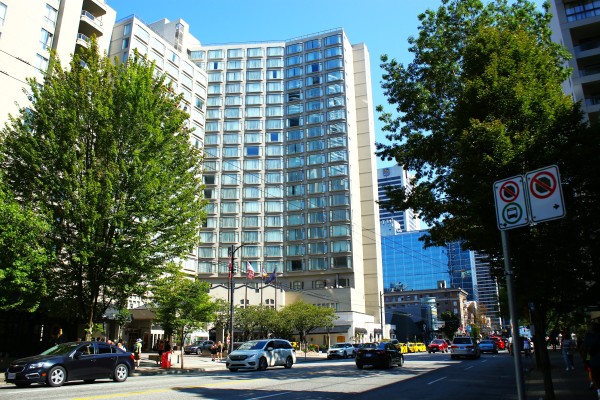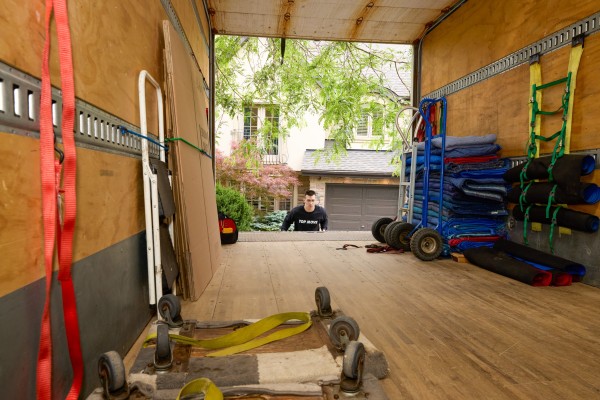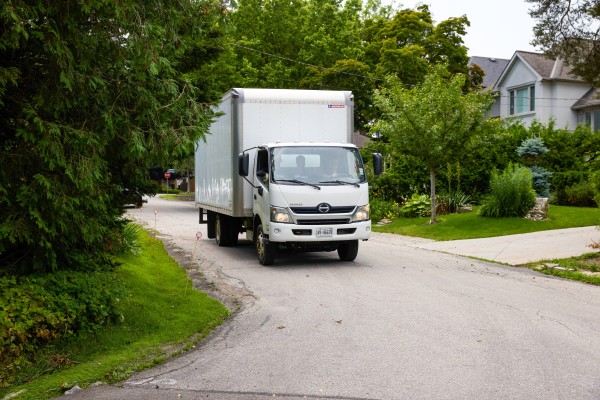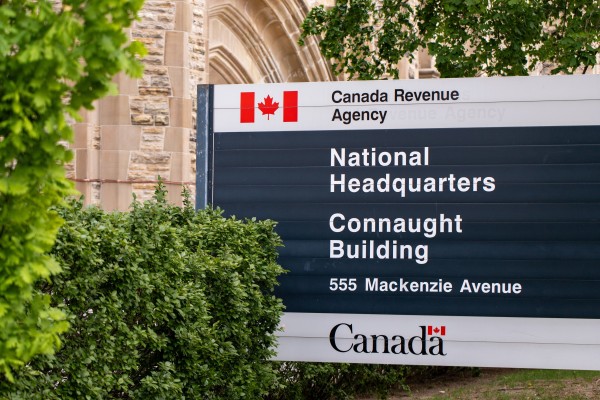Your complete office relocation guide for Canada


It’s a fine art to juggle moving an entire office while maintaining workflow, organisation and productivity. Whether your office is moving to accommodate a growing team, downsizing to adapt to more hybrid and remote positions within the company, or relocating due to your current building's need for upgrades, planning will help you avoid many unnecessary hassles. A well-planned and executed office move will help you save time, money and headaches so you can keep your focus on running your company or organisation.
Here is a practical office-moving checklist to guide you through the process from start to finish, including some expert tips from the team at Wise Move to help minimise stress and promote office-moving cohesion.
Office relocation timeline
6–12 Months before moving office
-
Read your current office lease and take note of notice periods, penalties and restoration responsibilities.
-
Create a budget that includes transport, packing, IT setup, downtime (this is essential), and any new furnishings that your office may need.
-
Designate a relocation team or assign a moving manager to oversee planning and execution.
-
Think about what your new office needs in terms of space, parking, meeting rooms, a staff kitchen, and any other amenities. Research options that check all of these boxes.
-
Get quotes early on from trusted office moving companies in your area. Compare prices and adjust your budget if needed. Take note of each company’s insurance policy.
-
Customer reviews are the best form of research. Read reviews of potential moving companies to get the most honest, unfiltered feedback. Movers will be in charge of dealing with expensive equipment and important documents, so you want to be assured that you can trust your chosen moving company.
3–6 Months before moving office
-
Secure your new office premises.
-
Design a floor plan and demarcate your team zones, common areas and storage.
-
Notify everyone, from your staff and clients to your suppliers.
-
Plan to update your business address for all platforms and official documents.
1–3 Months before moving office
-
Create an inventory of your office contents. This can help you keep track of everything and make sure nothing gets lost in transit.
-
Downsize and declutter anything you don’t need:
-
Donate furniture and supplies to charities or thrift stores
-
Shred and recycle any unnecessary paperwork.
-
Recycle anything you can along the way. Make sure you follow Canada's guidelines for waste management and recycling.
-
Plan your IT move and consider backups, external hard drives, internet setup and safe, secure device transport.
-
Plan your move and packing with sustainability in mind:
-
Only order boxes if you can’t repurpose the ones you have already. Look for unbleached cardboard products made from recycled materials.
-
Labels and stickers (including fragile stickers).
-
Biodegradable packing tape with non-toxic glue.
-
Bubble wrap (only if completely necessary). Find innovative ways to cushion items, like using curtains and blankets.
-
-
Book your office moving date with your chosen trusted office relocation company and confirm arrangements with them.
Office moving week
-
Pack items that aren’t needed every day. Label boxes clearly by team or function.
-
Walk through both your current and new offices to check for any issues.
-
Share your moving plans with your team, identify specific roles and include all the schedule details.
Office moving day
-
Supervise the move and assist the moving team where needed. Professional movers have the experience and expertise to get the job done efficiently, so you don't want to get in the way too much. You can guide them along the way and identify where the boxes need to go to make unpacking easier.
-
Prioritise setting up internet, phone lines, and other systems in the new office.
-
Walk through the new space with staff and ask for feedback, resolving any immediate issues as you go.
Settling into the new office space
-
Unpack essentials first and focus on getting operational as quickly as possible.
-
Update your new address on Google, supplier accounts, and online listings.
-
Ask your team for feedback to improve any future relocations.
Choosing the right office movers office movers Canada" />
office movers Canada" />
Finding reliable office moving companies is one of the most important steps in relocating an office. The moving company’s professionalism and skill will affect every other aspect of the move. Experienced movers will handle your equipment, furniture and documents with care. They won’t waste a minute of your time executing the move.
Wise Move's innovative platform provides access to the best office movers in Canada. You can compare reviews, prices and services to find the best match for your individual needs.
Costs involved in relocating your office in Canada
The cost of your office move is affected by several factors:
-
Size of the office and volume of items to be moved.
-
The types of buildings of both current and new offices—whether they have stairs or an elevator, and if they're on the ground floor.
-
The distance between the old and new location.
-
Packing and unpacking services.
-
Special handling for IT infrastructure or sensitive items.
-
Weekend or after-hours moving (to reduce business disruption).
Local office moves (within the same city or region)
-
Small office (5–10 employees): CA$1,500 – CA$3,500
-
Medium office (10–30 employees): CA$3,500 – CA$7,000
-
Large office (30+ employees): CA$7,000 – CA$20,000+
Long-distance moves (inter-city/province)
-
Small office: CA$4,000 – CA$8,000
-
Medium office: CA$8,000 – CA$15,000
-
Large office: CA$15,000 – CA$30,000+
It's best to get multiple quotes for a more precise estimate according to your specific needs.
For a comprehensive breakdown of moving costs and to get personalised quotes, use Wise Move's moving cost calculator.
Top tip: Take photos of your current office. These photos can help you in determining your inventory and also serve as a visual guide in setting up your new office.
Packing tips for office moves
-
Label all boxes with contents and department names. You can never label too much. Don’t hesitate to label every side to make sorting and unpacking easier.
-
Give each team colour-coded labels or tags.
-
Pack tech gear in original boxes if possible. Wrap cords separately.
-
Create an essentials box for each team with things they'll need on day one in the new space.
-
Avoid overloading boxes. Safety always comes first.
Do a thorough office move-out clean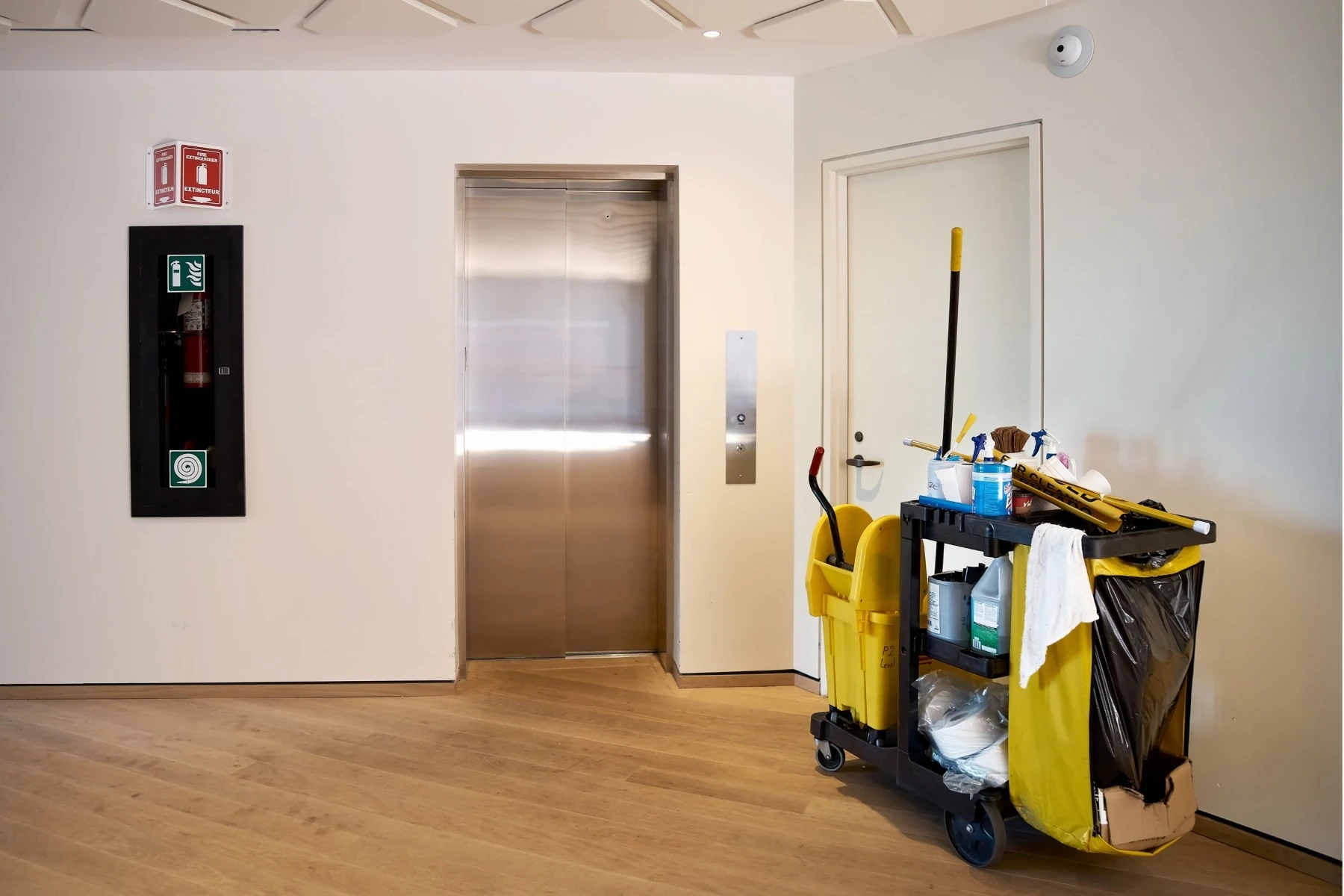
Whether you hire professional cleaners or have your staff help out, make sure to follow these guidelines to leave your old office location clean and inviting.
1. Dust and wipe surfaces
Dust all surfaces throughout the office, including desks, shelves, baseboards, and windowsills. Follow up by wiping everything down with an eco-friendly all-purpose cleaner to remove grime, smudges, and germs.
2. Clean office equipment
Wipe down all electronic equipment like monitors, keyboards, mice, phones, and printers. Use electronics-safe cleaners or alcohol wipes to avoid damage. Be sure to unplug devices first. Then, remove any batteries or loose cables for packing or dispose of them responsibly.
3. Wash windows and glass
Clean all interior windows, glass doors, and any glass partitions using an eco-friendly window cleaner. Pay special attention to fingerprints and smudges. If your lease requires it, consider hiring professionals for any hard-to-reach or exterior windows.
4. Clean the floors
Vacuum carpets thoroughly, especially in high-traffic areas. If there are stains or if your lease specifies, arrange for professional carpet cleaning. For hard flooring, like tile or vinyl, sweep and mop to remove dust, dirt, and scuff marks.
5. Tidy the kitchen and sanitise the bathrooms
Empty and clean out all kitchen appliances, including the fridge, microwave, kettle, and coffee maker. Wipe down countertops, sinks, and cupboard doors. In the bathroom, scrub toilets and sinks with disinfectant, clean mirrors, and mop the floors. Take out all trash and recycling so both spaces are fresh and clean.
Top tip: Follow our eco-friendly guide to your move-out clean in Canada
Common office moving mistakes to avoid
-
Procrastination with planning: We recommend starting 3 months in advance.
-
Not hiring professional movers: Without professional help, you risk damage and delays.
-
Poor labelling: Unclear or missing labels slow down the unpacking process and also confuse the team.
-
Forgetting IT infrastructure: Plan internet, phones, and data security installations in advance.
-
Failing to notify stakeholders: Inform clients, suppliers, and service providers of your new address and move date, well before your move.
-
Overlooking cleaning requirements: Neglecting to clean your old and new office space can result in penalties, grumpy staff and a poor first impression.
Wise Move office movers is the smart way to go
Planning an office move is a big job, but you don’t have to handle it alone. Wise Move helps you easily find and book the right office movers across Canada for your needs. Simply post your job, compare quotes from vetted moving companies in your area, and choose the best movers with confidence, while staying in control of your relocation from start to finish.
FAQs: Preparing for an office move
How long should we plan for an office relocation?
We recommend planning your move at least 3 months ahead for small offices and 6 months for larger ones.
How can we keep disruption to a minimum?
Move during off-peak times, work with experienced movers, and prioritise IT setup.
What’s the best way to move sensitive equipment and files?
Back up and encrypt data, use protective packing, and choose professional movers with document-handling experience.
How do we prepare staff for an office move?
Communicate early on about your plans, provide clear schedules, and involve them in layout planning by asking for feedback and suggestions.
How long does it take to move an office?
Generally, most moves are completed in one day (4 - 8 hours). However, if you need help packing, add 1-3 days. If your office is on multiple floors, add 1 additional day per floor.
Do we need insurance for the move?
A: Yes. Make sure you verify the coverage with your insurer or moving company.
What do our customers say?








 office movers Canada" />
office movers Canada" />








